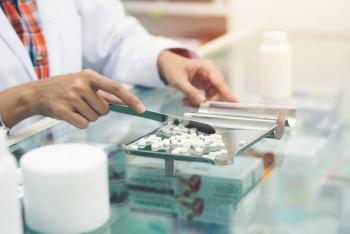
Biosimilars Have Entered the Market, But Are They Safe?
Biosimilars are starting to come on the market, but some have questions about their safety.
The number of biosimilars on the market continues to grow in the United States, but safety concerns about them remain.
“I think the theoretical concerns are really around the fact that the molecules can’t be made exactly the same as the reference product because of the complexity and size of the molecule,” said James G. Stevenson, PharmD, FASHP, Professor of Clinical Pharmacy at the
The manufacturing process for a biosimilars is proprietary, which means it won’t be exactly the same, potentially creating safety concerns, he said.
Related article:
For example, while there have been no incidents with biosimilars, there have been cases with biologics in general where small differences in the manufacturing process have led to immunogenicity problems, Stevenson noted. These problems could result in a decrease in efficacy of the drug through development of neutralizing antibodies or could result in adverse effects, he said.
Suhasini Sharma, MD, Director of Medical Affairs for
“In the long run, what we need to decide is: Are there any unique or adverse effects or issues related to a particular biosimilar product that are different from the reference product?” she said.
Because biosimilars and their reference products have similar biological actions, Sharma said safety and efficacy data from the reference product is valuable in determining safety of a biosimilar, but additional research may be necessary.
Guidelines Needed
The FDA has issued guidances for industry on developing and labeling biosimilars, including a draft guideline released in January that outlines considerations for interchangeability with a reference product. Additional guidance for health-care professionals could further reduce safety concerns, she said.
The European Medicines Agency has released an
A similar FDA document could be valuable. “It would be very helpful for the prescribers and health-care professionals to be aware of issues around the use of a biosimilar product and monitor its safety,” she said.
There have also been concerns about the naming of biosimilars and names that could cause confusion, said Stevenson.
In the current naming policy, a nonproprietary name is used along with a four-letter suffix. “The problem, in my view, is when you select a four-character suffix that doesn’t have any meaning at all it won’t be easy for prescribers or patients or anyone to remember which product a patient is really on. What it will actually do is make it more difficult, I think, to correctly have pharmacovigilance of these products,” Stevenson said.
Related article:
Sharma said that while reporting and collecting adverse reaction information that clearly identifies a specific product, the manufacturer, and even the batch number needs to be recorded. Product labels must include information related to both the reference product and the specific biosimilar, identified by source.
She believes there needs to be better communication between pharmacists and physicians, but doesn’t believe pharmacists should substitute one biosimilar for another without discussing the change with the prescriber.
While experts acknowledge that there are safety concerns that still exist with biosimilars, Stevenson believes, particularly for immunogenicity, that they are more hypothetical than real at this point. He pointed to the success Europe has had using biosimilars in the last decade. The regulatory process used in Europe is very similar to the one used in the United States. “There hasn’t been any biosimilar that has been withdrawn from the market in Europe,” he said.
As more biosimilars enter the market, Stevenson said pharmacists will play a valuable role in helping physicians, other health-care providers, and patients increase their comfort level with this new drug category.
“I think pharmacists have a huge role to play because there is a lot of confusion about this,” he said. “From a patient perspective this is new. They are not sure what it means.”
Newsletter
Pharmacy practice is always changing. Stay ahead of the curve with the Drug Topics newsletter and get the latest drug information, industry trends, and patient care tips.




